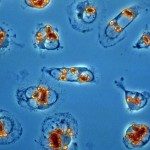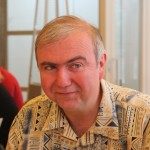Link to Pubmed [PMID] – 22884419
Link to DOI – 10.1016/j.str.2012.07.005S0969-2126(12)00256-0
Structure 2012 Oct; 20(10): 1649-60
Mitogen-activated protein kinases (MAPKs) are involved in environmental signal sensing. They are thus expected to play key roles in the biology of Trypanosomatid parasites, which display complex life cycles and use extracellular cues to modulate cell differentiation. Despite their relevance, structural data of Trypanosomatid MAPKs is lacking. We have now determined the crystal structure of Leishmania major LmaMPK10, a stage-specifically activated MAPK, both alone and in complex with SB203580. LmaMPK10 was observed to be more similar to p38 than to other human MAPKs. However, significant differences could be identified in the catalytic pocket, as well as in potentially regulatory sites in the N-terminal lobe. The modified pocket architecture in LmaMPK10 precludes DFG-in/DFG-out regulatory flipping as observed in mammalian MAPKs. LmaMPK10-nucleotide association was also studied, revealing a potential C-terminal autoinhibitory mechanism. Overall, these data should speed the discovery of molecules interfering with LmaMPK10 functions, with relevance for antileishmanial drug development strategies.




